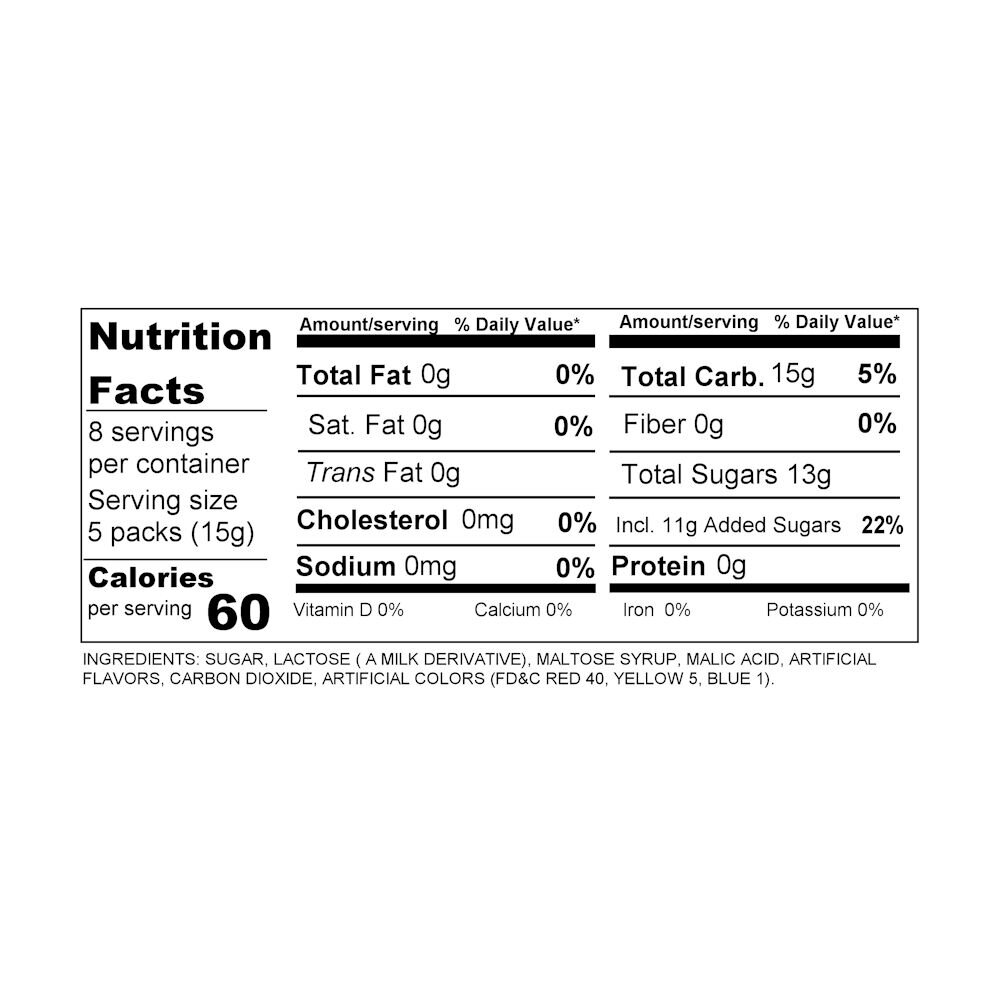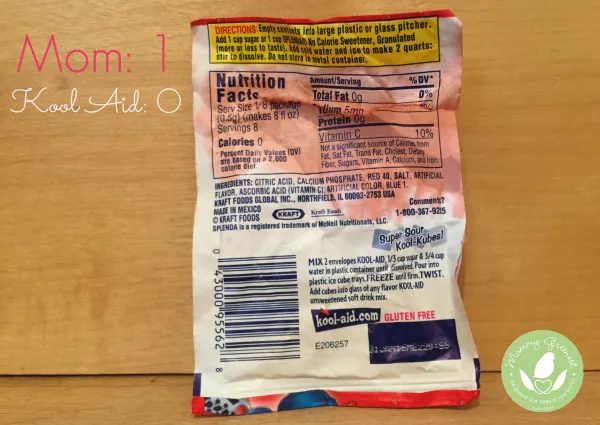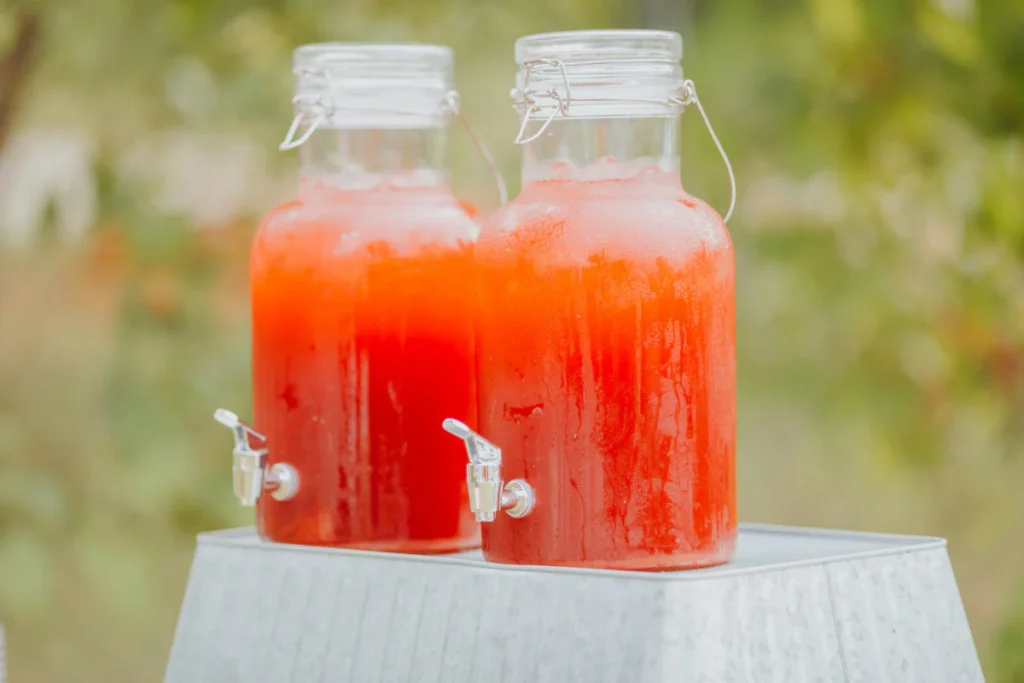Kolaches are tasty pastries with varying nutritional content, but they should be enjoyed in moderation due to their high sugar, fat, and calorie content.
In this detailed guide, we will break down the Kool-Aid nutrition label, its ingredients, health considerations, and tips on how to enjoy it more healthily.
What is Kool-Aid?

Kool-Aid is a powdered drink mix made by Kraft Heinz that, when mixed with water and sugar, creates a refreshing and colorful beverage. First introduced in 1927, it has since evolved into a variety of flavors, including tropical, berry, and citrus options. While the original product was just a flavoring powder, over the years, Kool-Aid has expanded into other forms, such as ready-to-drink bottles and sugar-free versions. Despite these variations, Kool-Aid’s nutritional values remain a concern for those mindful of their diet, as sugar content is high in the classic powdered version.
Breaking Down the Kool-Aid Nutrition Label:
The nutrition label for Kool-Aid varies slightly depending on the flavor and whether it’s the sugar-sweetened or sugar-free version. However, the primary focus tends to be on sugar content, as it is the key ingredient that contributes to the calorie count. Below is a breakdown of the standard Kool-Aid powder nutrition label (per serving size of 1 packet, or about 2 teaspoons of powder):
Calories:
Kool-Aid is low in calories before any sugar is added. Typically, a serving of the powder alone contains 5 to 10 calories. However, this changes dramatically when you add sugar. For a typical gallon of Kool-Aid, you might add between 1 to 2 cups of sugar, which can add an additional 800 to 1600 calories, depending on how much you use. The total calorie count of a finished pitcher can be anywhere from 800 to over 1000 calories per gallon, making it a high-calorie drink.
Also Read: GooGpop Mango Junior Pops Nutrition Label – A Comprehensive Guide!
Total Fat:
Kool-Aid contains zero grams of fat in its dry mix. This makes it a fat-free beverage in its powdered form, which could be a desirable option for those watching their fat intake. However, it’s important to note that the overall fat content can rise slightly if you add milk or cream (in case of a customized recipe).
Sodium:

The sodium content in Kool-Aid is relatively low, with a typical serving containing around 5 milligrams of sodium. This is a small amount, especially compared to other sugary beverages that can be high in sodium. While sodium is essential for maintaining proper fluid balance, it’s easy to consume too much, so it’s beneficial that Kool-Aid offers a low-sodium alternative.
Carbohydrates and Sugars:
Carbohydrates, particularly sugar, are the main contributors to Kool-Aid’s calorie count. Kool-Aid powder typically has about 1 to 2 grams of carbohydrates per serving. The rest of the carbohydrates in the drink come from the sugar you add. On average, 1 cup of sugar (which is the typical amount for a gallon of Kool-Aid) contains approximately 200 grams of sugar.
For reference, this is the equivalent of consuming around 50 teaspoons of sugar. The high sugar content can contribute significantly to your daily carbohydrate and sugar intake, which can have implications for your overall health, particularly if you’re managing conditions like diabetes or are trying to maintain a healthy weight.
Protein:
Kool-Aid contains no protein in its powdered form. Since it’s a beverage made from sugar, flavorings, and coloring agents, it is not a source of protein. If you’re looking for a drink to help boost your protein intake, you may want to explore other beverages like smoothies, milk, or protein shakes.
Also Read: Grounded Coffee Madison Nutrition – A Nutritional Overview from Madison!
Vitamins and Minerals:
One of the benefits of Kool-Aid is the added Vitamin C. While the amount of Vitamin C varies depending on the flavor, many varieties of Kool-Aid are fortified with Vitamin C. A serving may contain anywhere from 10% to 20% of your daily recommended intake. Vitamin C is important for immune function, skin health, and wound healing.
In addition to Vitamin C, some Kool-Aid flavors may also contain small amounts of other vitamins and minerals like calcium and iron, but these amounts are not substantial enough to be considered a significant source of these nutrients. The presence of these added nutrients can make Kool-Aid seem like a healthy option, but it should not be relied upon as a primary source of vitamins and minerals.
Artificial Sweeteners and Dyes:

Kool-Aid is known for its intense colors, which are often derived from artificial food dyes like Red 40, Yellow 5, and Blue 1. These synthetic dyes have been approved for use by food safety agencies, but some consumers prefer to avoid them due to potential health concerns. While the FDA has classified these dyes as safe, there is ongoing debate about their long-term effects, especially in children. For those who are concerned about artificial colors, it’s worth noting that some natural alternatives, such as fruit or vegetable-based dyes, have become available.
Additionally, some sugar-free Kool-Aid options use artificial sweeteners such as aspartame or sucralose. These sugar substitutes offer a lower-calorie version of the drink, but like the artificial dyes, they may not be suitable for everyone. Some individuals choose to avoid these sweeteners due to concerns about their impact on gut health, metabolism, or other potential side effects.
Kool-Aid: Is It Healthy?
The question of whether Kool-Aid is healthy depends largely on your dietary needs and how you consume it. Here are some important health considerations to keep in mind:
High Sugar Content:
The biggest concern with Kool-Aid is its sugar content. When you add the full amount of sugar recommended on the packet, the drink becomes a sugary beverage with very little nutritional value. High consumption of sugary drinks has been linked to obesity, type 2 diabetes, heart disease, and dental cavities. This is why it’s best to drink Kool-Aid in moderation.
Also Read: Wyoming Supplemental Assistance Nutrition Program Waiver – A Comprehensive Guide!
Empty Calories:
While Kool-Aid does provide some vitamins, it’s primarily a source of empty calories. This means it offers energy in the form of sugar without providing much in terms of protein, fiber, or other essential nutrients. If you’re trying to manage your weight or improve your overall health, you might want to limit your intake of beverages like Kool-Aid and opt for options with more nutritional value, such as water, tea, or smoothies.
Sugar-Free Options:

For those who love the taste of Kool-Aid but want to avoid the high sugar content, the sugar-free versions of Kool-Aid can be a better option. These use artificial sweeteners instead of sugar, which means they contain zero calories. While this can make Kool-Aid a more diet-friendly option, some people prefer to avoid artificial sweeteners due to personal preferences or concerns about their potential side effects.
Healthy Alternatives to Kool-Aid:
If you enjoy the fruity flavors of Kool-Aid but want a healthier alternative, here are some options to consider:
- Infused Water: Instead of Kool-Aid, try infusing your water with fresh fruits like lemon, lime, or berries. This adds natural flavor without the added sugar and calories.
- Homemade Fruit Punch: Make your own fruit punch at home using fresh fruit juices, a small amount of honey or stevia, and plenty of water. This way, you can control the sweetness and avoid artificial dyes and additives.
- Kombucha: For a tangy, fizzy drink, consider kombucha, which is a fermented tea that offers probiotics for gut health. It’s naturally low in sugar and contains beneficial bacteria.
FAQ’s
1. What is a Kolache?
A kolache is a soft pastry filled with sweet or savory ingredients, originating from Czech immigrants and popular in Central Texas.
2. How many calories are in a kolache?
A fruit-filled kolache typically contains 200–250 calories, while meat-filled versions can have 300–350 calories.
3. Are kolaches high in sugar?
Yes, sweet kolaches, especially those with fruit preserves or cream cheese, can contain up to 20 grams of sugar per serving.
4. Can kolaches be made healthier?
Yes, you can make healthier kolaches by opting for whole-grain dough, using fresh fruit fillings, or choosing lean meats for savory versions.
5. Are kolaches a good source of protein?
Savory kolaches, especially those filled with lean meats like turkey or chicken, provide a decent amount of protein, typically 8–12 grams per serving.
Conclusion
Kool-Aid is a sugary beverage that provides little nutritional value, offering mainly empty calories. While the drink contains some vitamins, particularly Vitamin C, it should be consumed in moderation due to its high sugar content, which can lead to health concerns like obesity and diabetes. Healthier alternatives, such as infused water or homemade fruit punch, can provide similar fruity flavors without the added sugar and artificial ingredients.